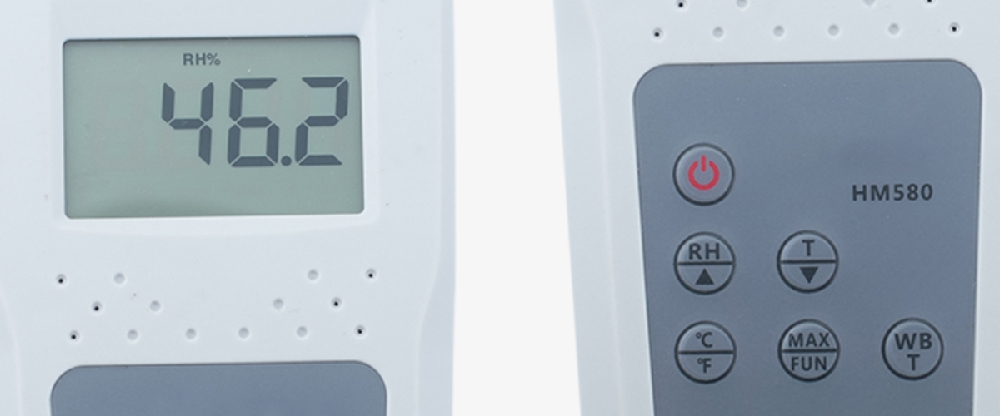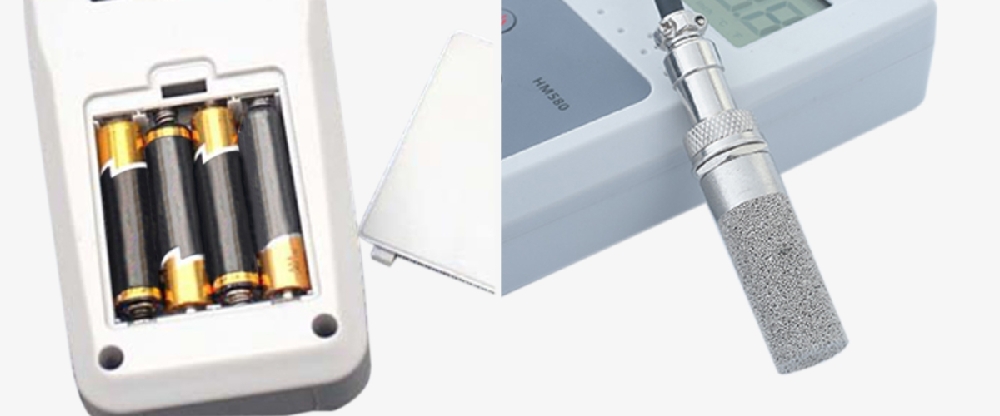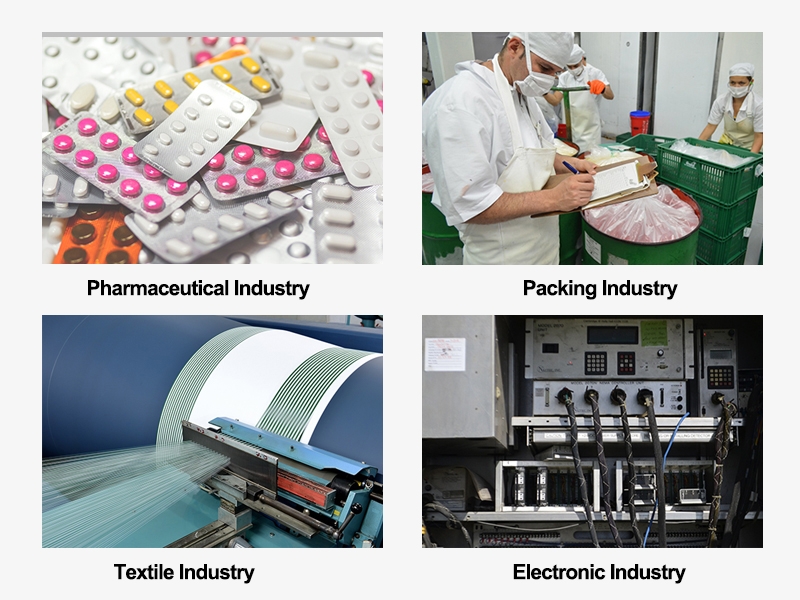A temperature and humidity meter, also known as a hygrometer or thermo-hygrometer, is a device used to measure both the temperature and humidity levels in the surrounding environment. The temperature is usually displayed in Celsius (°C) or Fahrenheit (°F) units on the device’s screen.
Features
- Able to measure humidity, temperature and wet bulb temperature.
- Adopt digital signal sensing technology, good measurement repeatability, fast response and high sensitivity.
- Digital display with back light gives exact and clearly reading although you stay at the somber conditions.

LCD display/Operation area
- Moisture temperature meter with a backlight LCD technology clear display, and low power consumption.
- Microprocessor control, moisture tester built-in program automatic protection measures, good stability.

Power Supply/Precision Probe
- The power supply of the moisture detector is equipped with 4 No.7 batteries.
- Wide working range, probe type sensor can be used for in-depth measurement of materials.
Applications
The moisture meter, also known as the moisture detector, is an instrument that can quickly measure the moisture content. It is used for the moisture control of raw materials, production process, laboratory final quality control and other links in various industries such as machine room, supermarket, production workshop and construction site.

| Model | HM580 |
| Display | 45 mm dispaly |
| Parameters Measured | humidity and temp, wet bulb temp |
| R.H Range | 5-98% |
| R.H Resolution | 0.1 RH% |
| R.H Accuracy | 2.5 RH% |
| Temp Range | -40 ℃~60 ℃ |
| Temp Resolution | 0.1 ℃ / 0.1 ℉ |
| Temp Accuracy | 0.4 ℃ |
| Wet Bulb Temp Range | -20 ℃~60 ℃ |
| Wet Bulb Temp Resolution | 0.1℃ / 0.1℉ |
| Wet Bulb Temp Accuracy | 0.4 ℃ |
| Sampling Time | less than 0.5s |
| Power Supply | 4x1.5 AAA size (UM-4) battery |
| Dimension | main unit: 185 mm×70 mm×30 mm |
| Weight | 125g (not including batteries) |
Q1: How does a moisture meter work?
A1: The portable moisture detector is composed of a capacitance sensor, C/V conversion circuit, A/D converter and LCD digital display circuit. After the capacitance sensor is scooped into the tested grain, the medium is a variety of different grains tested. Since the dielectric constant of water is much larger than that of general substances, a small change in the measured grain water content will cause a large change in the capacitance of the sensor. Through the C/V conversion circuit and A/D converter, the LCD digital circuit directly shows the percentage of the measured grain water content.
Q2: What are the types of moisture meters?
A2: A moisture meter (moisture tester) is a measuring instrument for moisture content that can quickly determine the moisture content of a substance. Commonly used moisture meters include chemical moisture meters, paper moisture meters, infrared moisture meters, grain moisture meters, building materials moisture meters, mortar moisture meters, crack moisture meters, soil moisture meters and wood moisture meters.
Q3: Why need a moisture meter?
A3: A moisture meter is essential for measuring the moisture content of materials, especially in fields like agriculture, construction, and woodworking. It helps prevent issues like mold, decay, and structural damage by ensuring optimal moisture levels. In agriculture, it aids in determining the right time for planting and harvesting. For construction, it prevents damage due to excessive moisture in building materials. In woodworking, it prevents warping or cracking of finished products. By providing quick and accurate moisture readings, moisture meters enable informed decisions, efficient processes, and the preservation of quality and safety across various industries.
Tips: What is a temperature humidity meter?
A temperature humidity meter, often referred to as a hygrometer or a thermo-hygrometer, is a compact device designed to measure and display the levels of temperature and humidity in the surrounding environment. It provides real-time readings, enabling users to monitor variations in atmospheric conditions. Temperature is measured in degrees Celsius or Fahrenheit, while humidity is expressed as a percentage of the air's moisture content. These meters find extensive applications in various fields, including indoor climate control, weather forecasting, industrial processes, agriculture, and research settings. They play a crucial role in maintaining optimal conditions for comfort, health, and performance, as well as in preventing issues like mold growth, equipment damage, or material deterioration caused by excessive moisture. Temperature humidity meters come in various forms, ranging from basic analog devices to advanced digital models with data logging and connectivity features.
Thank you for buying industrial test and measurement equipment on SISCO.com, all products sold by SISCO and the partner cover a 12 months warranty, effective from the date of receiving the products.
What is covered?
SISCO is responsible for providing free spare parts, and free technical support to assist the customer to repair the defective products until the problem is solved.
What is not covered?
- Product purchased from anyone other than a SISCO store or a SISCO authorized reseller.
- Expendable parts.
- Routine cleaning or normal cosmetic and mechanical wear.
- Damage from misuse, abuse or neglect.
- Damage from use of parts other than SISCO approved.
- Damage from use outside the product’s usage or storage parameters.
- Damage from use of parts not sold by SISCO.
- Damage from modification or incorporation into other products.
- Damage from repair or replacement of warranted parts by a service provider other than a SISCO authorized service provider.
- Damage caused by the application environment not meeting the product usage requirements and the failure to perform preventive maintenance.

